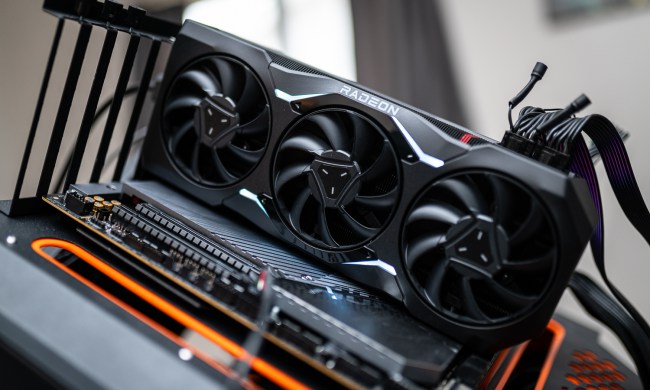
Now that dual-core processors have become the status quo for CPUs, it looks like graphics processors are taking a step in the same direction. AMD’s latest GPU, the R680, will pack two processors onto one board.
News of the new GPU came from the senior vice president and general manager of AMD’s graphics group, Rick Bergman, in his presentation on Thursday’s 2007 Financial Analyst Day (PDF). The R680 will use the same compact 55-namometer design as its predecessor, the RV670, but doubled up. According to DailyTech, two other new cores, the RV620 and RV635, were also announced, but they will merely be scaled down 55-nanometer variants of the RV610 and RV630, respectively.
AMD plans to launch boards with the new GPUs next month. Despite have two processors from the get-go, R680-based boards should still be CrossFireX-enabled, allowing builders to stack two or more cards in a system.



